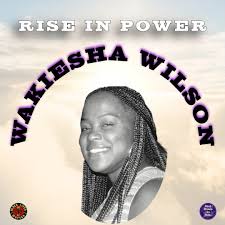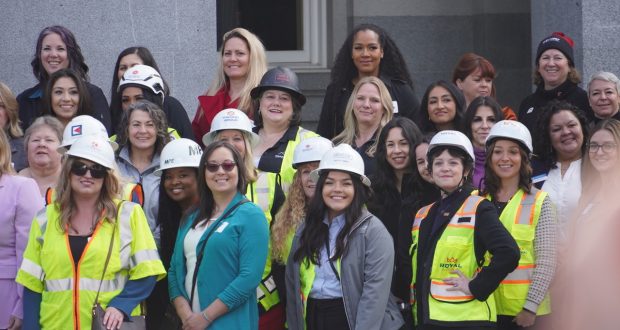By McKenzie Jackson | California Black Media
Usually it’s come as you are, but this past Sunday the message to parishioners of African-American churches across the Golden State was tune in online.
Worship houses from Southern California to beyond the Bay Area have been instructed not to hold in-house services for some time due to the novel coronavirus outbreak making its way around the globe.
“We may not be able to touch in the natural but we are connected in the spirit,” the Rev. Jacqueline Thompson, pastor of Allen Temple Baptist Church in Oakland, told her parishioners via video stream last Sunday. The 100-year-old congregation is one of the oldest Black churches in the Bay Area.
For Clint Thompson of Santa Monica the governor’s shelter in place order meant abandoning his weekly jaunt to West Angeles Church of God in Christ in Los Angeles for Sunday service. The popular South Los Angeles church canceled its service and instead live-streamed Bishop Charles E. Blake’s message online. Thompson, a 37-year-old actor, said he watched the service for his weekly inspiration, but noted that he missed sitting in the pews.
“The service is good and its theatrical,” he said. “The music is good, the praise dancing. It feels like a live music festival.”
Thompson isn’t the lone California worshipper who will be catching the gospel online during this time.
Churchgoers across the state are tuning into worship services online via video streaming on their websites or social media pages in response to government officials across the state requesting that church services not convene anytime in the foreseeable future to slow the rapid spread of the coronavirus and COVID-19, the disease it causes.
Sermons, choir performances, praise and worship, and other church service mainstays go on as usual. But they happen in front of a handful of worshippers, camera crews and technicians responsible for posting the services online — instead of the dozens to hundreds of people who usually pack California Black church benches on Sunday mornings.
The Rev. Kenneth C. Curry, Jr., pastor of Friendship Baptist Church in Yorba Linda, said not preaching in front of hundreds of familiar faces is a strange feeling, but it is an essential one because of the health risks that come with the rapidly spreading respiratory illness. Curry said when Gov. Gavin Newsom issued a health emergency that put restrictions on public gatherings larger than 250 people, his church’s services were immediately cancelled. They began taping them for the internet.
“I’ve preached in small groups, but its hard when you are standing in a sanctuary that you know holds 700 people, and you might be preaching to ten, and you are trying to make it feel like Sunday morning, and you’re far from Sunday morning,” he said. “It’s different, but it’s a service that is needed, so I make it happen for my people to the best of my ability.”
Last Sunday, was men’s Sunday at Allen Temple Baptist in Oakland. The members of the men’s chorus performed on stage in a formation that allowed six feet of social distance among them. Each man had his own mic.
“We’re scared right now, lord. We don’t understand what you are doing and we don’t like it,” Thompson, the pastor at Allen Temple, prayed during her Oakland church’s live stream that was broadcast on Facebook and on the church’s website.
“But remind us that you are gracious. Even in the midst of this, thank you for slowing us down and connecting us with family and what is important in this world,” she added.
The spread of the coronavirus, officially declared a pandemic by the World Health Organization on March 11, has sickened more than 329,000 people on six continents according to official tallies by governments and health organizations. It has caused the deaths of at least 14,522 people, as of Monday morning.
In the United States, there have been 428 deaths and 33,018 health cases attributed to the illness.
In California, so far, there have been 33 deaths related to COVID-19 and an estimated 1,849 people have tested positive.
The high infection rate of the untreatable virus has changed life across the globe, shuttering businesses, schools, offices, restaurants, sports and entertainment venues and any other places groups of people might gather.
Governments have urged people to stay indoors.
California’s Black churches say they are taking the pandemic seriously by vigorously cleaning their worship houses and closing their doors to the public for regular church activities.
Pastor “J” Edgar Boyd of First African Methodist Episcopal Church of Los Angeles said in an online statement his church is working on ways for the church body to stay connected through video chats and conference calls.
“Please know that we are praying for the safety, physical wellbeing and spiritual strength for you, your household, and for your entire family,” Boyd wrote.
Curry said no services have taken place at his church since March 15. The church has been streaming its 8 a.m. and 11 a.m. services, and Sunday was the first time they broadcast their Sunday school service, which had about 130 viewers. He said churchgoers watch online messages.
“I don’t care what a church does, even if it is in a minimized form, I think every church has to have some type of online presence,” Curry said. “They will figure out how to watch it. Even if they have to bring their grandkids over to get them online. They will figure out how to access it.”
The pastor hinted at a question some churches will have: How to deal with deaths in church families? One of Curry’s congregants recently died, and another expected to pass soon.
“We have to find a way to figure out how to celebrate that individual’s life,” he said.
Pastor Touré Roberts of The Potter’s House at One L.A. said in his Sunday morning sermon, that it seems like the world has been flipped on its head during the coronavirus emergency, but he saw a silver lining
“There are sometimes it feels like the world wasn’t turned upside down, but it was turned right-side up,” he said. “People are spending more time with their families. People are texting one another and checking on one another. In the midst of all this craziness, it seems we are getting our priorities straight, and I have just come to suspect that God is somewhere in it.”
At Third Baptist Church in San Francisco, a 168-year old African-American congregation, pastor Amos Brown prayed a solemn prayer for those affected by the Coronavirus crisis.
“We pray for those on hospital bed waiting for healing, waiting for medical supplies desperately needed in this time of a pandemic worldwide,” he said.
 Westside Story Newspaper – Online The News of The Empire – Sharing the Quest for Excellence
Westside Story Newspaper – Online The News of The Empire – Sharing the Quest for Excellence







